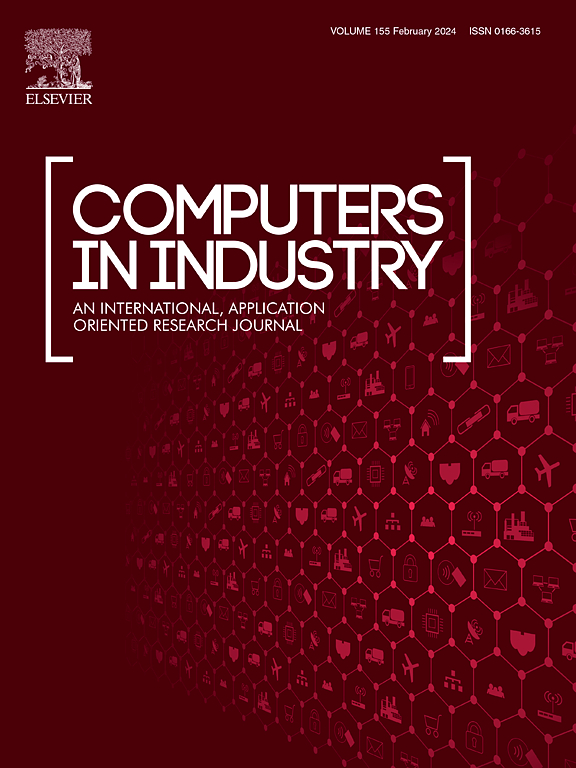An augmented reality-enabled digital twin system for reconfigurable soft robots: Visualization, simulation and interaction
IF 8.2
1区 计算机科学
Q1 COMPUTER SCIENCE, INTERDISCIPLINARY APPLICATIONS
引用次数: 0
Abstract
In the rapidly evolving field of soft robotics, the development of new materials, structural designs, and conceptual frameworks has led to the rise of soft robot technology, which is now moving towards a highly versatile modular architecture with potential uses across various industries. However, one of the main hurdles faced in this domain is the shape-morphing challenge, as existing visualization and simulation tools struggle to adequately represent the complex and continued deformation behaviors of soft robots. Furthermore, there is a distinct lack of intuitive, user-friendly platforms for visualizing and interactively controlling the shape-shifting capabilities of these robots. In response to these challenges, this paper introduces an innovative digital twin (DT) system for reconfigurable soft robots set within an augmented reality (AR) environment. This system facilitates a more natural and accurate depiction of 3D soft deformations and provides an intuitive interface for simulation. We utilize a parameterized curve-driven method to dynamically adapt the DT in the AR space, ensuring smooth transitions between various 3D shape-morphing states. We identify three fundamental shape-morphing patterns – stretching, bending, and twisting – and create advanced visualization tools to precisely demonstrate these morphological changes. To enhance the real-time representation of shape-morphing, we employ sensor fusion to detect and depict the soft robot’s structural changes as parameterized curves. Our system is fully operational in an AR environment, empowering users to conduct immersive examinations and simulate reconfigurations of real-world soft robotic systems.

可重构软机器人的增强现实数字孪生系统:可视化、仿真和交互
在快速发展的软机器人领域,新材料、结构设计和概念框架的发展导致了软机器人技术的兴起,现在正朝着一个高度通用的模块化架构发展,在各个行业都有潜在的用途。然而,该领域面临的主要障碍之一是形状变形的挑战,因为现有的可视化和仿真工具难以充分表征软机器人复杂和持续的变形行为。此外,明显缺乏直观、用户友好的平台来可视化和交互式地控制这些机器人的变形能力。为了应对这些挑战,本文介绍了一种创新的数字孪生(DT)系统,用于在增强现实(AR)环境中设置可重构软机器人。该系统有助于更自然和准确地描述3D软变形,并为仿真提供直观的界面。我们利用参数化曲线驱动方法在AR空间中动态调整DT,确保各种3D形状变形状态之间的平滑过渡。我们确定了三种基本的形状变形模式-拉伸,弯曲和扭曲-并创建了先进的可视化工具来精确地展示这些形态变化。为了增强形状变形的实时性,我们采用传感器融合来检测软机器人的结构变化并将其描述为参数化曲线。我们的系统在AR环境中完全可操作,使用户能够进行沉浸式检查并模拟真实世界软机器人系统的重新配置。
本文章由计算机程序翻译,如有差异,请以英文原文为准。
求助全文
约1分钟内获得全文
求助全文
来源期刊

Computers in Industry
工程技术-计算机:跨学科应用
CiteScore
18.90
自引率
8.00%
发文量
152
审稿时长
22 days
期刊介绍:
The objective of Computers in Industry is to present original, high-quality, application-oriented research papers that:
• Illuminate emerging trends and possibilities in the utilization of Information and Communication Technology in industry;
• Establish connections or integrations across various technology domains within the expansive realm of computer applications for industry;
• Foster connections or integrations across diverse application areas of ICT in industry.
 求助内容:
求助内容: 应助结果提醒方式:
应助结果提醒方式:


